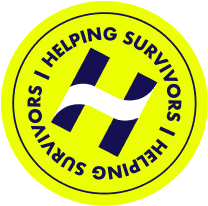Sexual Assault in the Workplace
Workplace sexual assault is any physical sexual contact where there was not explicit consent exchanged and is a form of sexual harassment. If you have experienced sexual assault by a manager, another employee, or a customer, you have rights and options.

Have you experienced sexual assault or abuse?
We can help answer your questions and connect you with an attorney if you may have a case.
"*" indicates required fields

Author: Kathryn Kosmides
Survivor Advocate

- Anyone can be a victim to sexual assault in the workplace and it can be perpetrated by a boss, a coworker, a vendor to the business, or a customer
- Sexual assault in the workplace can include non-physical and physical acts but differs from workplace sexual harassment
- Understand the legal rights and steps for victims, including reporting to HR, reporting to law enforcement, or filing a civil lawsuit to seek compensation and prevent future harm
What Is Sexual Assault in the Workplace?
While definitions of sexual assault various across jurisdictions, in general, the other party must have intended offensive or harmful contact.Generally, sexual assault is any sexual behavior or contact that happens without your consent.
Sexual assault can include activities such as:
- Fondling
- Forced intercourse
- Attempted rape
- Forcible sodomy
- Incest
- Child molestation
Sexual assault includes instances in which the victim cannot consent due to intoxication, disability, age, fear, or other circumstance.
It’s important to understand that while rape is a type of sexual assault, it’s not the only type. Unwanted touching and other forms of sexual contact are also considered sexual assault.
Sexual assault can and does occur regularly in workplaces across America, but victims rarely report it. The statistics regarding victims of sexual harassment show that sexual harassment and assault are more common than you might think, with 38 percent of all women and 14 percent of all men reporting an experience at work. The World Health Organization reports that nearly a third of women worldwide report experiencing sexual violence at least once.
In the workplace, the courts can still hold the employer responsible even if a sexual assault occurs outside the office or off the clock. An employment relationship between the parties may be enough for the basis of a claim. This is particularly true if the incident is severe, repetitive, or contributes to a hostile work environment.
If you were sexually assaulted in the workplace, Attorneys that work with Helping Survivors may be able to assist you.

- What Is Sexual Assault in the Workplace?
- Steps You Can Take After Experiencing Workplace Sexual Assault
- Impact of Workplace Sexual Assault on Victims
- Sexual Harassment vs. Sexual Assault
- Who Is Impacted Most by Workplace Sexual Assault?
- How Sexual Harassment and Assault Affects the Workplace
- Want To Speak With A Lawyer?
Steps You Can Take After Experiencing Workplace Sexual Assault
If you have experienced sexual assault in the workplace, you can take steps to ensure your safety and legal rights.
First, you should ensure your physical safety. If sexual penetration occurred, you should seek out a sexual assault forensic exam, or rape kit, in your area. A rape kit can be critical to legal action, should you pursue it. You should also document any cuts, bruises, or other injuries with photographic evidence. It is best if the medical practitioner notes your injuries, too.
Next, you should report your sexual assault. If your workplace has a method for reporting the assault internally, you should consider this option. Additionally, you should consider contacting the police, depending on the sexual act.
Your state will have a statute of limitations for reporting sexual assault and filing a lawsuit. Some deadlines are as short as two years. You can check the statute of limitations and other laws related to sexual assault. Because statutes of limitations sometimes have complicated exceptions, it is strongly advised that you speak with a workplace sexual assault lawyer about important litigation deadlines.
Don’t neglect your mental health in the aftermath of workplace sexual assault. You can call the National Sexual Assault Online Hotline to chat with a trained staff member who can provide you with crisis support while maintaining your confidentiality.
Impact of Workplace Sexual Assault on Victims
Workplace sexual assault harms employees’ mental and physical health. A recent American Heart Association study showed that workplace sexual assault and sexual harassment were associated with a higher risk of hypertension in female nurses.
Data from that same study showed a link between workplace sexual assault/harassment and women’s cardiovascular health. They found that women who experienced sexual assault or workplace sexual harassment were more likely to develop high blood pressure.
Other physical health effects of sexual assault can include:
- Bruising
- Bleeding
- Soreness
- Headaches
- Eating issues
- Sexually transmitted infections (STIs)
Sexual Harassment vs. Sexual Assault
Sexual harassment is a broad term that covers many types of unwanted sexual attention of both physical and non-physical nature. Workplace sexual harassment can include comments, touching, leering, gestures, and jokes.
Alternatively, sexual assault is sexual behavior that occurs without the victim’s consent. It is often physical in nature or a failed attempt to be physical. It can include groping, rape, and attempted rape.
Many may assume that sexual assault is more serious than sexual harassment. However, the legal definitions can vary between states, and both can be highly traumatizing. Different states categorize sexual actions differently and can apply different penalties.
Whether an employee experiences sexual harassment or sexual assault, the event would constitute a dreadful experience. Neither should be permitted to occur inside or outside the workplace.
Sexual Assault in the Workplace Statistics
Although anyone can be affected by sexual assault in the workplace, most commonly, sexual assault is committed against women. In general, one out of every six American women has experienced rape or attempted rape. While this statistic is not specific to workplace sexual assault, it shows the massive epidemic of sexual violence against women.
Studies show that the most vulnerable workers are often the most impacted by workplace sexual assault. A 2010 study by UC Santa Cruz’ Irma Morales Waugh found that out of 265,000 total female farm workers in California, nearly 51,000 have been sexually assaulted or raped through coercion or blackmail.
The types of industries most likely to experience workplace sexual assault include:
- Male-dominated industries
- Service-based industries
- Low-wage industries
These workers often face further or ongoing harm given their need to remain employed and deep fears of retaliation for reporting, including job loss and deportation.
A 2017 survey by UK-based Trades Union Congress found that 12% of LGBTQ+ respondents reported experiencing workplace sexual assault.
Alongside LGBTQ+ individuals, other particularly at-risk groups include:
- Those who work in an isolated context, such as janitors and domestic care workers
- Those who lack a legal immigration status
- Those who work for tips
Other shocking workplace sexual assault statistics include:
- In 2019, there were 7,825 reports on sexual assault in the US military.
- In the U.S., between 2010 – 2012, 5.6% of women (almost 7 million) and 2.5% of men (nearly 3 million) reported some type of sexual violence by a workplace-related perpetrator.
- The same study revealed an estimated 1 million women (0.8%) have been raped by a workplace-related perpetrator.
How Sexual Harassment and Assault Affects the Workplace
Workplace sexual assault and harassment don’t benefit anyone, including the company. Sexual assault and harassment in the workplace can produce many unwanted side effects.
For example, workplace sexual assault and harassment can contribute to the following:
- Gaps in leadership
- Drops in employee productivity and performance
- Drops in employee retention
- Drops in hiring
Additionally, sexual assault and harassment in the workplace can lead to criminal and civil charges. These can result in lengthy and expensive court cases, negatively highlighting your company name.
Want To Speak With A Lawyer?




